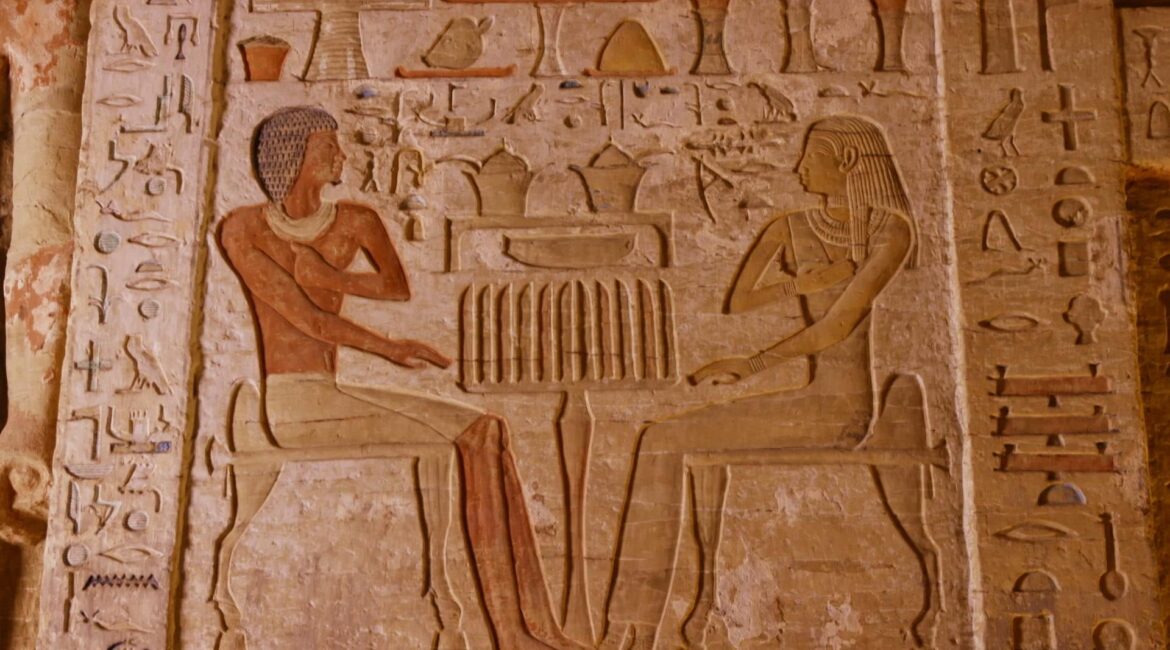The ancient Egyptians left behind a rich tapestry of art, architecture, and symbols that speak to their beliefs about life, death, and the divine. Among the most intriguing aspects of this civilization are the symbols they used to communicate ideas about life, protection, and the journey beyond death. These symbols are not just ancient hieroglyphs etched into stone; they represent powerful beliefs that continue to capture the imagination of people today.
From the famous Ankh, a symbol of life, to the protective Eye of Horus and the mysterious Scarab, these symbols held deep meaning and were central to the Egyptians’ spiritual practices. This blog explores some of the most iconic symbols of Ancient Egypt and their significance, particularly in the realms of life, protection, and the afterlife.
The Ankh: The Key of Life
Perhaps the most recognizable symbol from Ancient Egypt is the Ankh, often referred to as the “Key of Life” or the “Crux Ansata.” Shaped like a cross with a loop at the top, the Ankh symbolized eternal life, immortality, and the life-giving powers of the gods.
The Egyptians believed that life extended beyond the physical realm into eternity. The Ankh was often depicted in the hands of deities, who were shown bestowing this powerful symbol upon pharaohs and other important figures, symbolizing their ability to provide the breath of life. It was also used in funerary practices, as the Egyptians believed the Ankh ensured the deceased’s passage into the afterlife, where they would live eternally.
The Ankh’s loop represents the sun rising on the horizon, while the horizontal and vertical lines represent the duality of life — male and female, earth and heaven. This balance was essential to the Egyptians’ understanding of harmony and continuity in both life and death.
The Eye of Horus: Protection and Healing
The Eye of Horus, also known as Wadjet, is a symbol deeply rooted in the mythology of Ancient Egypt. According to legend, Horus, the sky god, lost his eye in a battle with his uncle, Set, the god of chaos, after Set murdered Horus’s father, Osiris. Horus’s eye was later restored by the god Thoth, and thus became a symbol of healing, protection, and restoration.
The Eye of Horus was used extensively as an amulet to guard against evil, offer protection, and ensure good health. It was often worn as jewelry or placed in tombs to safeguard the deceased on their journey to the afterlife. The eye itself also carried astronomical meaning, with Horus being the god of the sky and his eyes representing the sun (right eye) and moon (left eye).
This symbol became a powerful protective talisman, used not only by the living but also in burial rites, where it was placed over the incision made during mummification to protect the body in the afterlife.
The Scarab: Transformation and Protection
The scarab beetle, or Khepri, was another potent symbol in Ancient Egyptian iconography, representing transformation, rebirth, and protection. The Egyptians observed the beetle rolling balls of dung across the desert, which they interpreted as a metaphor for the sun being rolled across the sky by the god Khepri, a form of the sun god Ra. As the beetle lays its eggs inside these dung balls, new life emerges, further reinforcing the symbol’s connection to rebirth and regeneration.
Scarab amulets were worn for protection, especially in burial contexts. The scarab was placed on the chest of the deceased to ensure their safe passage into the afterlife and protect them from evil forces. The belief in the scarab’s power extended to the idea that it could renew the heart and help the deceased navigate their transformation from this life into the next.
Scarabs were also inscribed with spells from the Book of the Dead to assist the dead in their journey through the underworld, showing the beetle’s vital role in both protection and spiritual renewal.
The Djed: Stability and Resurrection
The Djed pillar is another symbol with deep ties to life and protection. Resembling a column with horizontal lines, the Djed represents stability and strength. It was closely associated with Osiris, the god of the underworld and resurrection, making it a powerful symbol of life after death.
The Djed was often painted or carved into tombs and coffins to provide strength and stability to the soul in the afterlife. In some interpretations, the Djed also represents the spine of Osiris, offering support and protection as the deceased went through the process of judgment and resurrection.
Rituals in Ancient Egypt included the “raising of the Djed,” a ceremony symbolizing Osiris’s victory over death and the restoration of order. Thus, the Djed was a significant part of ensuring a safe passage into the afterlife and achieving immortality.
The Shen: Eternity and Protection
The Shen is a symbol of eternity and completeness. Depicted as a circle of rope with no beginning or end, it was used to represent eternal protection by the gods, especially in relation to the king’s authority and the continuation of life. Shen amulets and carvings were popular as symbols of eternal protection, both in life and death.
Conclusion
The symbols of life and protection in Ancient Egypt serve as a fascinating window into how the ancient Egyptians understood existence, the afterlife, and their relationship with the divine. These symbols were not mere artistic expressions; they were deeply integrated into religious practices, daily life, and the rituals surrounding death and resurrection.
Whether worn as amulets, carved into tombs, or included in rituals, these symbols—the Ankh, Eye of Horus, Scarab, Djed, and Shen—offered protection, hope, and assurance of eternal life. Their powerful legacy continues to inspire and resonate with modern spiritual seekers, offering a glimpse into the enduring mysteries of one of history’s greatest civilizations.
